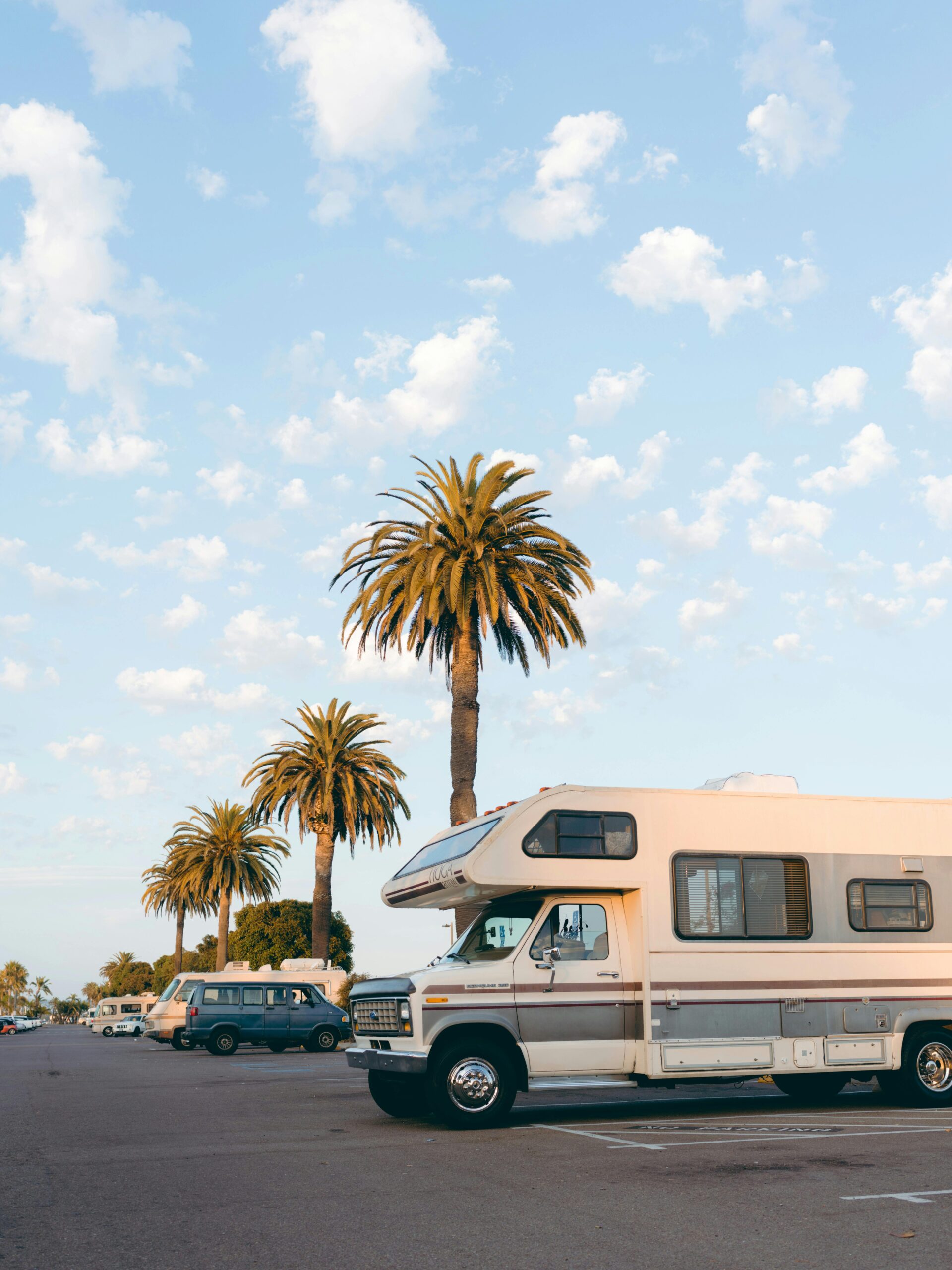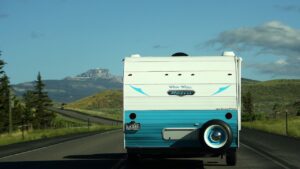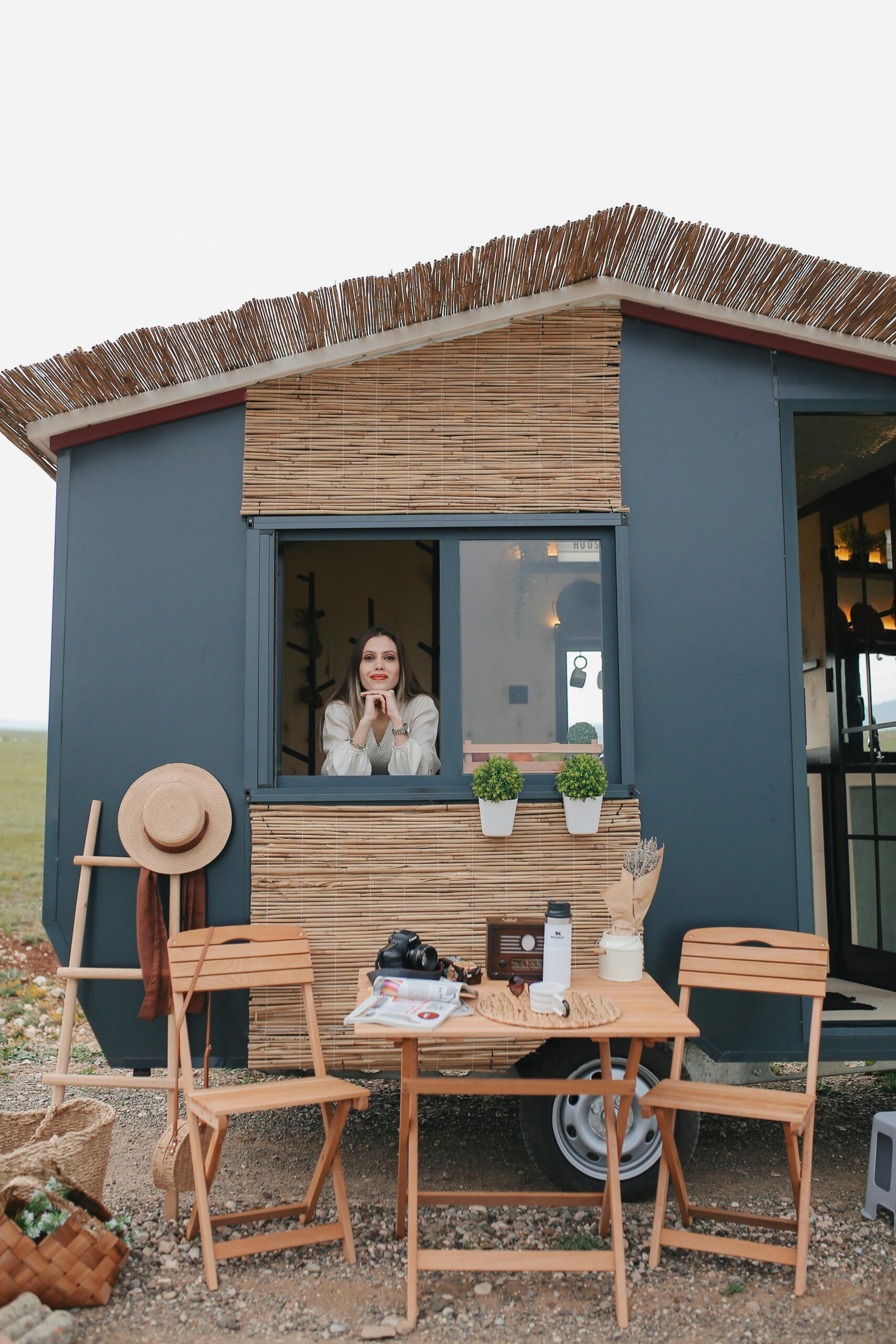Motorhomes (i.e. a camper that you drive) are more expensive than travel trailers, but they eliminate the need to have an expensive truck and they are easier to backup for people who are not well-practiced in backing up a trailer. They’re also typically larger than a trailer–especially if you get the kind with the bed over the cab.
The downside is that if you want to go to the grocery store or out to eat, you have to pack up your camper and leave something behind in your space at the campground to keep it from being taken while you’re gone. (Also, these things drink gas, so it’s not the best choice for doing errands or puttering around.) Some people get around these issues by towing a small car behind their camper, but that puts you back into the issue of towing something, and backing up a motorhome with a car behind it can be even more difficult than backing up a truck with a small travel trailer. But, depending on your location, you may be able to get by with a bike or small motorcycle or moped that you can use as an alternate vehicle and which can be strapped onto the back of the motorhome; no tow trailer required.
This is a 1976 full-size motorhome that was completely gutted and rebuilt into a bright, spacious tiny home. The drawbacks to this sort of project are the gutting work (as opposed to starting with something that’s already empty, like a cargo van, or almost completely empty, like a school bus) and the fact that all the car parts are decades old. As they point out, it would have probably been cheaper and less nerve-wracking if they could have just bought a vintage trailer instead of a motorhome, but if you don’t mind paying to have someone rebuild or replace everything under the hood—or you’re a mechanic and would love to have something like this to work on yourself—then maybe something like this could also be your labor of love.
Alternatively, if you have land, you can limp or tow your motorhome to the property and set it up permanently; it works just as well as a trailer in that regard. (I’ve even seen someone who did this with a bus and took the engine out of it. They then used the engine compartment as a little tool shed.)
This is another 1970’s motorhome, but it was not renovated, other than a few tweaks here and there, like adding a cabinet, taking out the bathroom sink, and adding solar. Even with having to replace the engine, plus other repairs and regular maintenance, and factoring in the original $3,300 he paid for the motorhome, the owner estimates that he has spent the equivalent of about $1,000 a year for his “house payment.” He mentioned that he works summers at a campground (which no doubt comes with a free parking space) and this, coupled with his low living expenses, allows him to have winters off to pursue his hobbies.
This is a 20 year old motorhome that a young couple remodeled (mostly cosmetic, but they did rip out some built-in furniture and replace it). It’s definitely brighter and more cheerful after they’ve painted it and opened up the space a little bit.
The before tour:
The after tour:
This young Turkish couple live in a very unique motorhome. I’m not sure if they somehow built it themselves, or if this is what motorhomes look like in Turkey, but it is beautiful inside and out and has a lot of features, like storage stairs to a loft bed, that you see in tiny homes (but not usually in campers). They’re in a city where they can actually park on the street, and this video is a sort of day-in-the-life of people camping on a street. If you are looking at building your own motorhome, or at least gutting one and starting from scratch, I think you can get some ideas from the layout you see in the video, but otherwise, it’s a really good idea of what you can expect having two people (and a dog) living inside this size space.
They’re speaking solely in Turkish, but you can turn on the closed captions and have them auto-translated into English and they seem to be pretty good. Between the captions and the context, you can figure out what they’re doing and why.
This video is a simple cosmetic makeover of a 2005 motorhome. If you can find an RV in decent shape, then some paint, peel-n-stick tiles, and new curtains and cushion covers may be all you need.
This is another cosmetic renovation video with some good tips. The first one is: look at a lot of new RVs to decide what features you want (a camper/RV show is a good place to look at a lot), then shop online for something used that most closely matches what you want in terms of size and layout.
Need something cheaper? Check out this post to for more camper options: Highway Homes: Exploring Options for Camper Living
Is a camper not the right option for your budget or area, but you want the nomad life? There are plenty of other alternatives available: On the Road Again – Exploring Nomadic Housing Options


